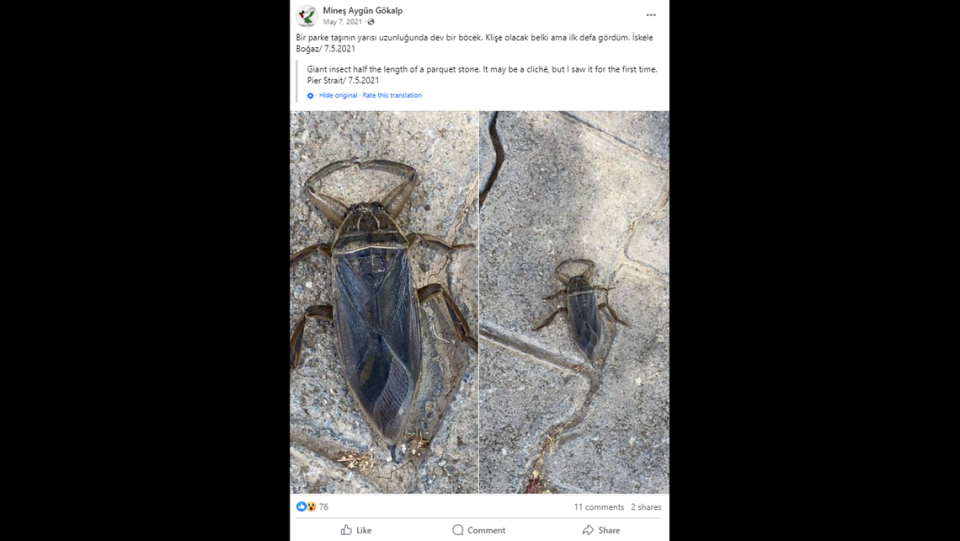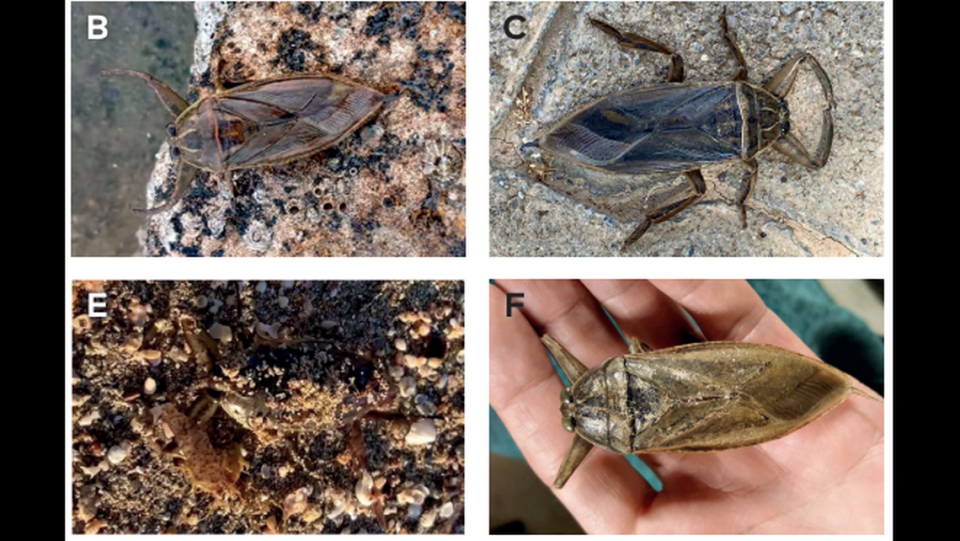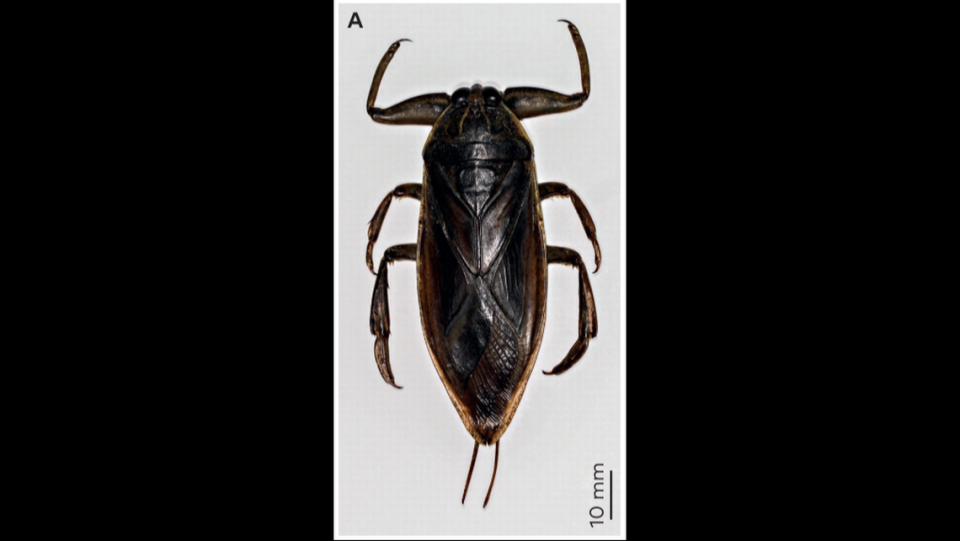Giant ‘toe biter’ found by swimmers on Mediterranean island. See the bird-eating bug
It’s the first day of your vacation on the Mediterranean island of Cyprus.
You arrive at Bedis Beach, overlooking the cool blue water, and lay down your towel to claim the perfect spot.
It’s hot, the sun is beating down and you decide to wade into the water to cool down.
As you step closer to the waves, you see something on the sand. It’s almost 5 inches long and has pinchers protruding from its hardened body.
Then it scurries toward you — and goes straight for your toes.
Researchers have put Cyprus beachgoers on high alert after swimmers discovered giant water bugs on the island for the first time, according to a study published in December in the journal Travaux du Muséum National d’Histoire Naturelle “Grigore Antipa.”
The water bugs, also known as “toe biter” bugs, are native to nations surrounding the Mediterranean Sea, including Greece, Turkey and Israel, but have been absent from Cyprus shores, according to a March 20 news release in Pensoft.
That was until a few years ago when swimmers, tourists and locals started to post sightings of the bugs on social media, according to the release.

Lethocerus patruelis, giant water bugs or electric light bugs, are the largest bug in the heteroptera family, the researchers said, and are known for maintaining a “predatory lifestyle.”
They regularly “prey on a variety of organisms such as invertebrates, fish, turtles and even birds,” according to the study.
They are also unique in that once a female lays eggs along the water, the male of the species cares for them, a “rare behavior among animals,” the researchers said.
The first sighting of the bug in Cyprus was posted to a Facebook group called “Biodiversity of Cyprus” in 2021, and it was quickly followed by photos from others who had visited the same beach on the eastern coast of the island and saw the bug, the researchers said.
“A total of seven sightings were eventually recorded, five from social media, and two after communications between local naturalists and the authors team,” according to the study. “Out of the seven records, we managed to acquire two individuals for a thorough morphological examination.”

The bugs were spotted along the east coast of Cyprus, the side halfway between Israel and Turkey, the researchers said.
They were also primarily found dead, or died soon after being captured, the researchers said, which suggests “they probably flew to Cyprus from the neighboring mainland.”
“The specimens landed exhausted on the shoreline,” according to the study, “or in some cases in the sea, which could indicate that they were transferred by wind or sea currents from nearby countries.”
The researchers didn’t find any of the bugs when they searched nearby waterways, suggesting the bug has not yet made a home on the island. But, because so many arrived in a short period of time, the possibility of the water bugs starting a population on Cyprus is not out of the question, the researchers said.

The bug is referred to as a “vicious hunter” and has “a reputation of inflicting very painful bites when handled carelessly,” according to the release. Researchers warn a resident population of the bug could cause issues for beaches and coastlines heavily populated by locals and tourists alike.
“Naturalists looking for alien-like critters can provide valuable information on the presence and a possible establishment of the species through citizen science,” the researchers said in the release. “Cypriots should keep their eyes open and their toes out of the water.”
Cyprus is an island nation in the eastern Mediterranean Sea. Part of the divided island is independent while part, the self-declared Turkish Republic of Northern Cyprus, is solely recognized by Turkey. The eastern coastline and Bedis Beach, where the insects were found, fall under the Turkish-controlled region.
Family stumbles onto huge alligator chomping prey at Texas beach. ‘That is a brute’
Elusive creature is spotted in ‘rare’ sighting — then is seen two more times in days
‘Dusky rose’ creature bought in Philippines market — and discovered as new species
Reddish sea creature — with over 70 feet — found by a submarine. It’s a new species

